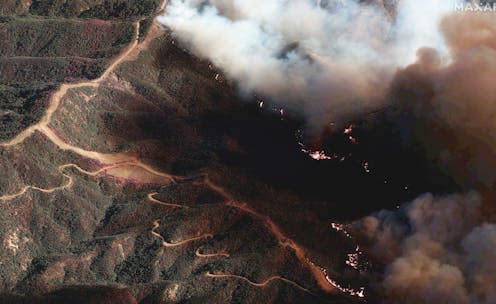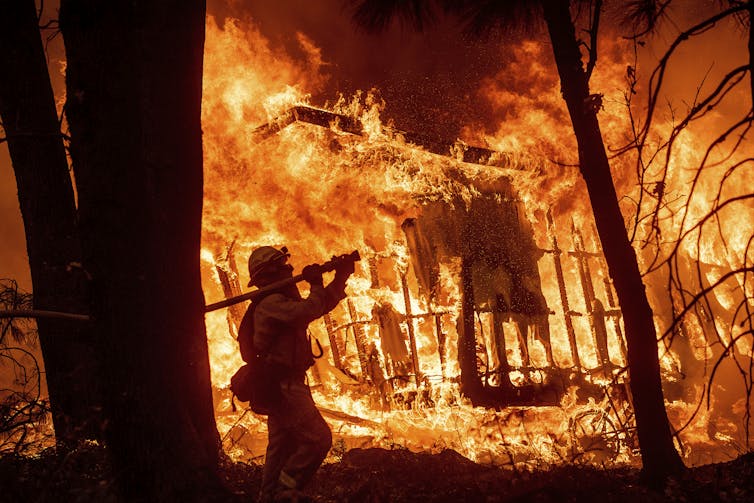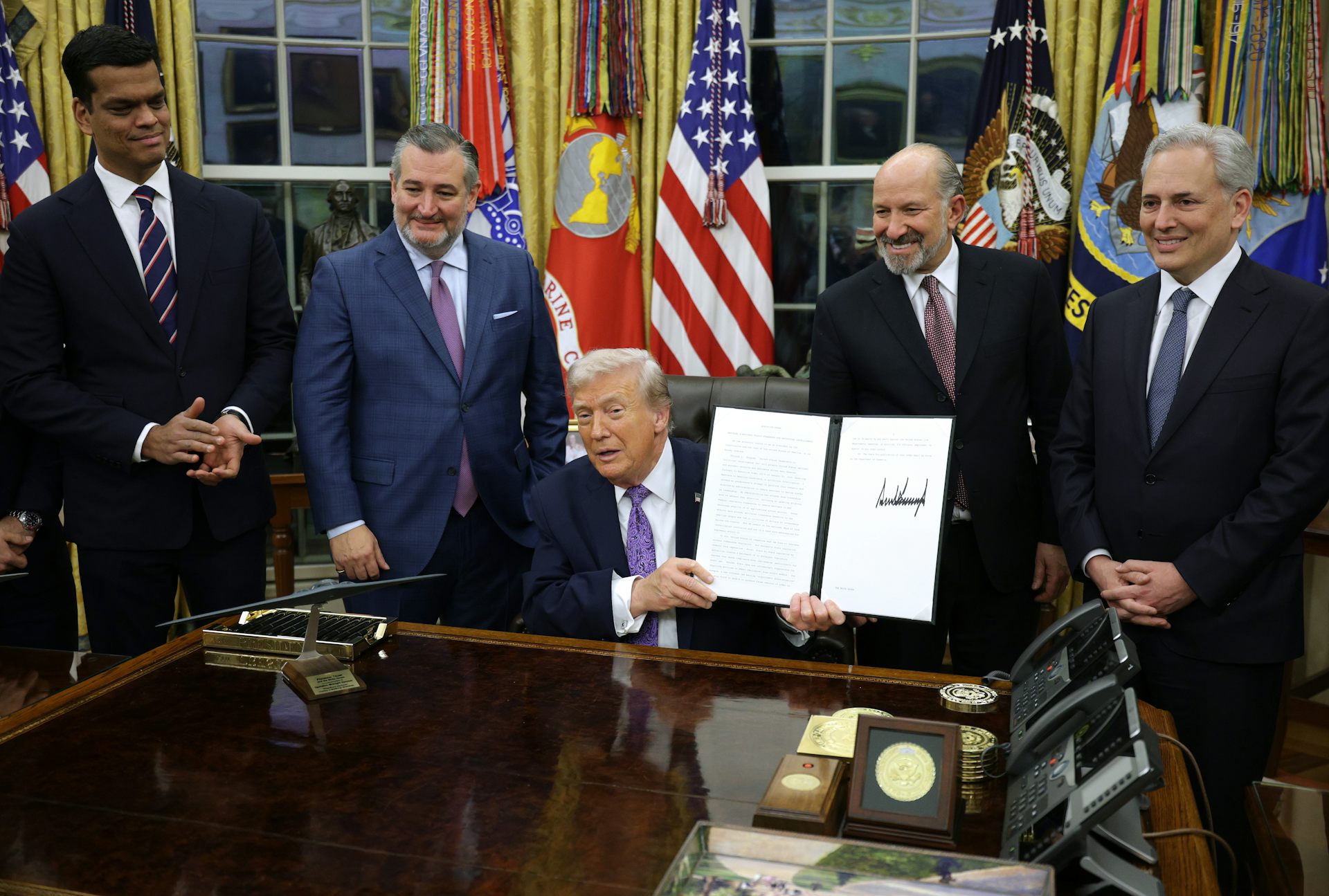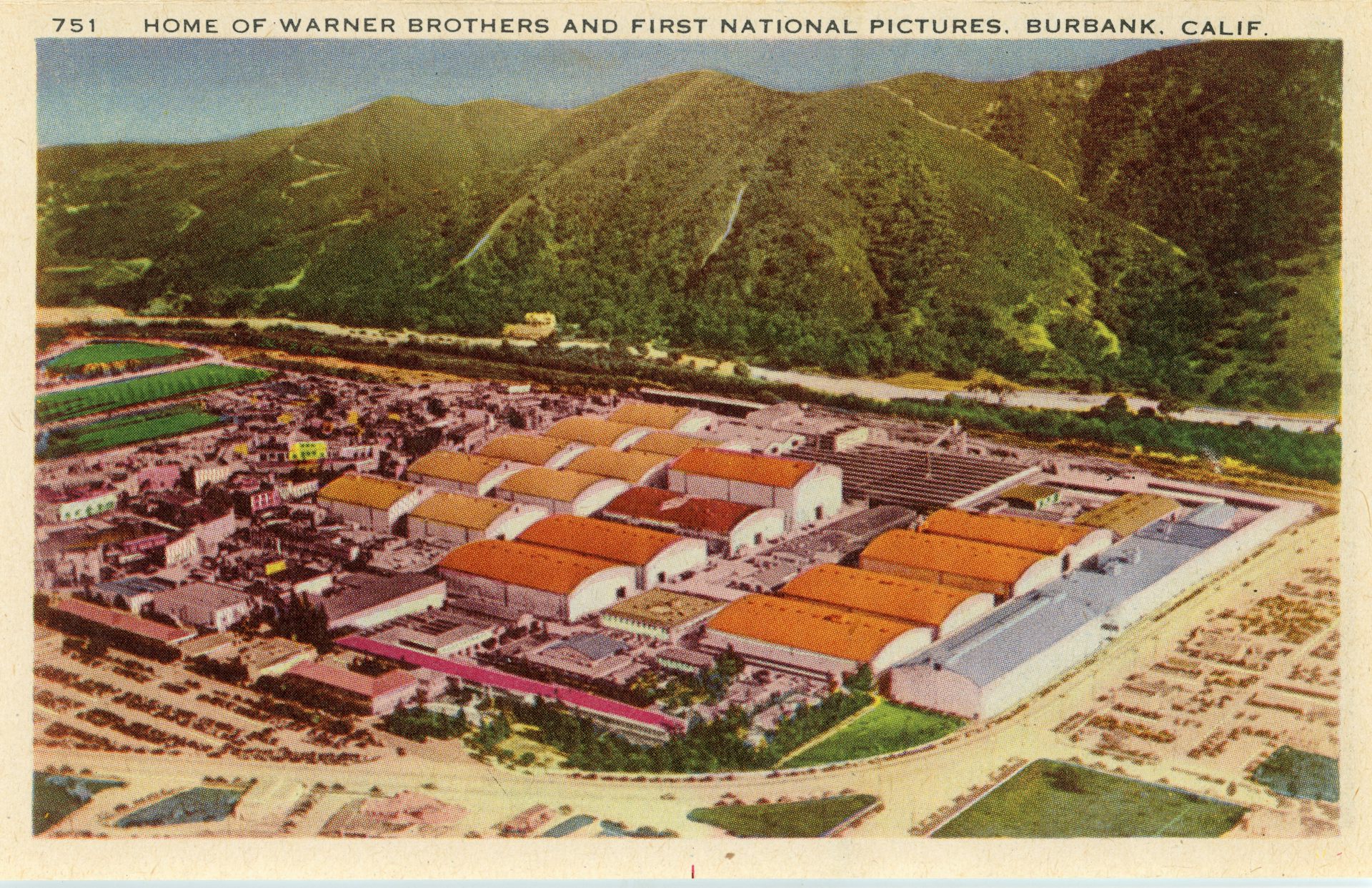California wildfires force students to think about the connections between STEM and society
In this course, eight professors share their disciplinary perspectives to help students analyze proposed interventions for increasing wildfire risks.

Uncommon Courses is an occasional series from The Conversation U.S. highlighting unconventional approaches to teaching.
Title of course:
“STEM & Social Impact: Climate Change”
What prompted the idea for the course?
Harvey Mudd College’s mission is to educate STEM students – short for science, technology, engineering and math – so they have a “clear understanding of the impact of their work on society.” But the “impact” part of our mission has been the most challenging to realize.
When our college revised its “Core Curriculum” in 2020, our faculty decided we should create a new required impact course for all students.
What does the course explore?
The course is taught by a team of eight instructors who share their own disciplinary perspectives and help students critically analyze proposed interventions for increasing wildfire risks.
Our instructors teach biology, chemistry, computer science and mathematics.
The class also includes scholars focused on media studies, political science religious studies and science, technology and society.
The course focuses on California wildfires so students can think critically about the ways STEM and social values shape each other.
For example, in 1911, U.S. Forest Service deputy F. E. Olmsted applied the Social Darwinist idea of “survival of the fittest” to forest management. Reflecting the prevailing views of his era, he believed that competition was the driving force behind biology, economics and human progress – where the strong thrive and the weak fail.
Olmsted said it was good forestry and good economics to let the forests grow unchecked. This policy would yield straight and tall “merchantable timber” suitable for sale and the needs of industry.
He also rejected “light burning,” which Native Americans had used for centuries to manage forest ecosystems and reduce the flammable undergrowth.
We live with the consequences of such reasoning 100 years later. Fires speed through overgrown land at alarming rates and release enormous amounts of carbon and other particulate matter into the atmosphere.
Why is this course relevant now?
Climate change is arguably the most pressing concern of our time. And wildfires are particularly relevant to those of us in fire-prone areas like Southern California.
Public distrust of science is increasing. Consequently, society needs skilled STEM practitioners who can understand and communicate how scientific interventions will have different consequences and appeal to different stakeholders.
For example, Los Angeles first responders have been using drones for search and rescue and to gather real-time information about fire lines since at least 2015.
But the public is not always comfortable with drones flying over populated areas.
The Los Angeles Fire Department has fielded enough citizen concerns about “snooping drones” and government concerns about data collection that it developed strict drone policies in consultation with regulators and the American Civil Liberties Union.
The course’s focus on writing, critical thinking and climate change science prepares students to participate in public discussions about such interventions.
By making students consider the impact of their future work, we also hope they will be proactive about the careers they want to pursue, whether it involves climate change or not.
What’s a critical lesson from the course?
Not everyone benefits in the same way from a single innovation.
For example, low-income and rural Americans are less likely to benefit from the lower operating costs and lower pollution of electric vehicles. That’s because inadequate investment in public charging infrastructure makes owning them less practical.
The course’s interdisciplinary approach helps to expose these kinds of structural inequities. We want students to get in the habit of asking questions about any technological solution.
They include questions like: Who is likely to benefit, and how? Who has historically wielded power in this situation? Whose voices are being included? What assumptions have been made? Which values are being prioritized?
What materials does the course feature?
We combine popular and scholarly sources.
Students watch two documentaries about the 2018 Camp Fire in Paradise, California, which killed 85 people.

They analyze wildfire data using the Pandas library, an open-source data manipulation library for the Python computer programming language.
They also read a Union of Concerned Scientists report examining fossil fuel companies’ culpability for increased risk of wildfires. And they analyze the environmental historian William Cronon’s classic indictment of the environmentalist movement for romanticizing an idea of a pristine “wilderness” while absolving themselves of the responsibility to protect the rest of nature – humans, cities, farms, industries.
We also examine poetry by Ada Limón, indigenous ecology and Engaged Buddhism.
What will the course prepare students to do?
The final assignment for the course asks students to critically analyze a proposed intervention dealing with growing California wildfire risk using the disciplinary tools they have learned.
For example, they could choose the increased deployment of “beneficial fires” to reduce flammable biomass in forests.
For this intervention, we expect that students would address topics like the historical erasure of Indigenous knowledge of prescribed burning, financial liabilities associated with controlled burning, and scientific research on the efficacy of beneficial fires.
Darryl Yong is a professor at Harvey Mudd College and co-directs Math for America Los Angeles. His work has been funded by the National Science Foundation.
Erika Dyson does not work for, consult, own shares in or receive funding from any company or organization that would benefit from this article, and has disclosed no relevant affiliations beyond their academic appointment.
Read These Next
What’s at stake in Trump’s executive order aiming to curb state-level AI regulation
In the absence of comprehensive federal AI regulation, states have stepped in. The Trump administration,…
Whether Netflix or Paramount buys Warner Bros., entertainment oligopolies are back – bigger and mor
Hollywood has seen this movie before.
How a niche Catholic approach to infertility treatment became a new talking point for MAHA conservat
Mainstream medical organizations have criticized ‘restorative reproductive medicine,’ but some Catholics…





